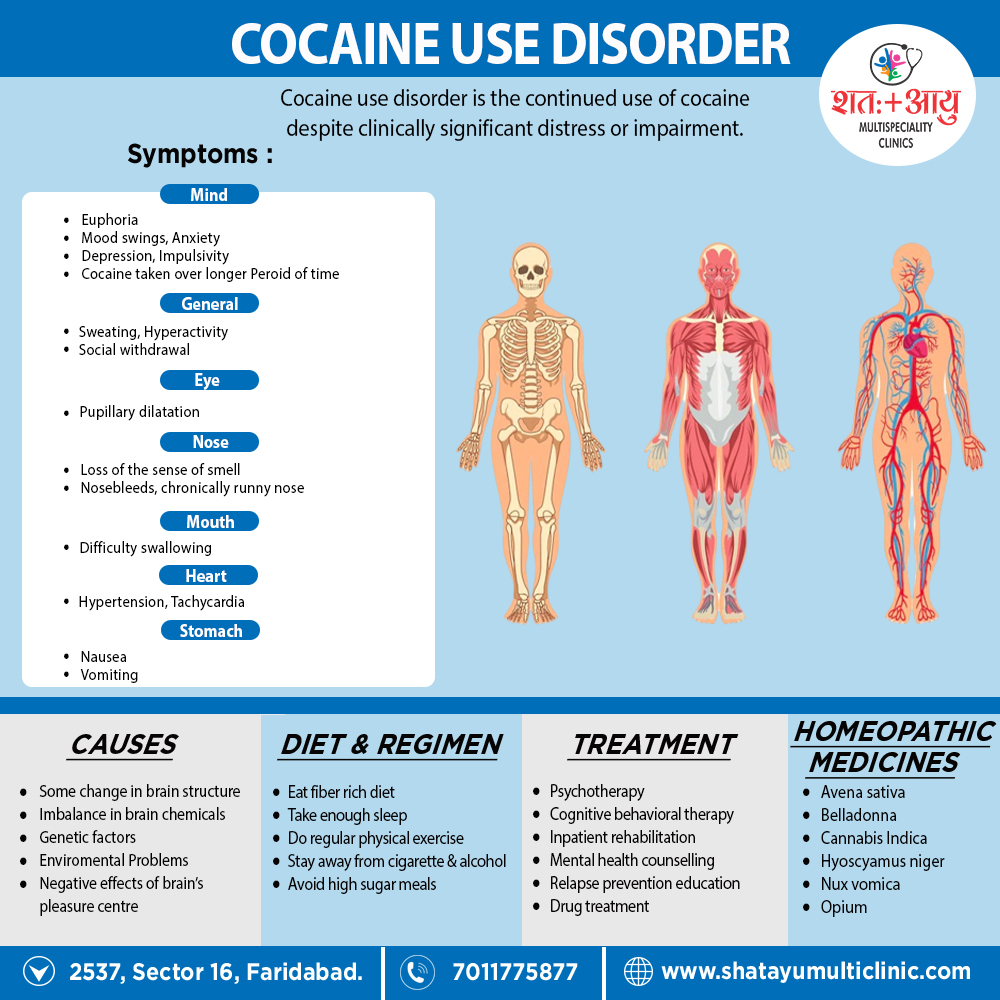Cocaine Use Disorder:
Generally, It can administer orally, intranasally, either by smoking ( especially free basing) or parenterally, depending on the preparation available. Moreover, Cocaine HCl is the commonest form use, follow by the free base alkaloid.
After that, Both intravenous use also free base inhalation produce a ‘rush’ of pleasurable sensations. Additionally, Cocaine is a central stimulant which inhibits the reuptake of dopamine, along with the reuptake of norepinephrine and serotonin.
In animals, cocaine is the most powerful reinforcer of the drug-taking behaviour. A typical pattern of cocaine use is cocaine ‘runs’ (in other words, binges), followed by the cocaine ‘crashes’ (in other words, interruption of use).
Besides this, Cocaine is sometimes use in combination with opiates like heroin (in other words, ‘speed ball’) or at times amphetamines. Lastly, Previously uncommon, cocaine misuse appears to be recently a growing problem in the metros of India.

